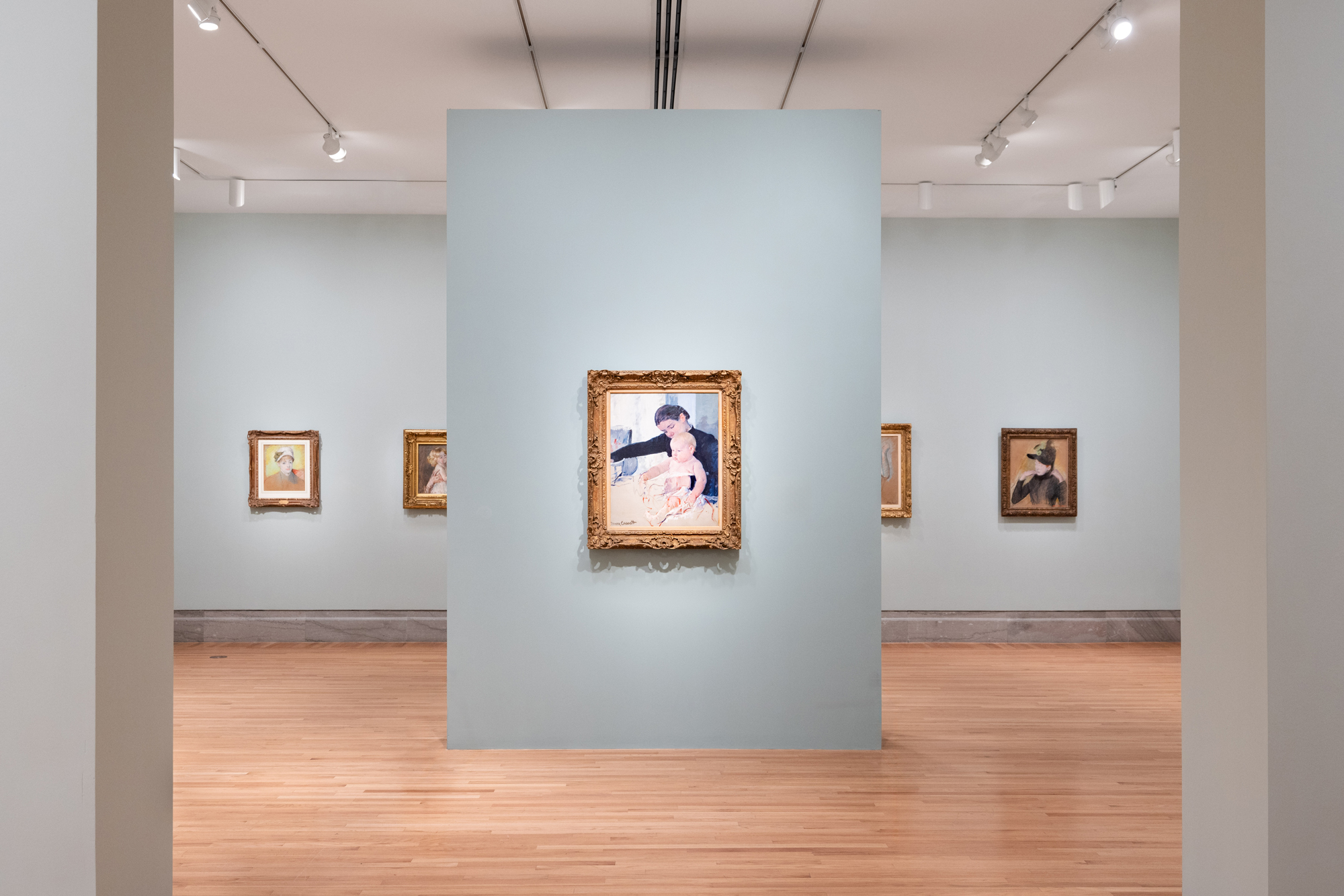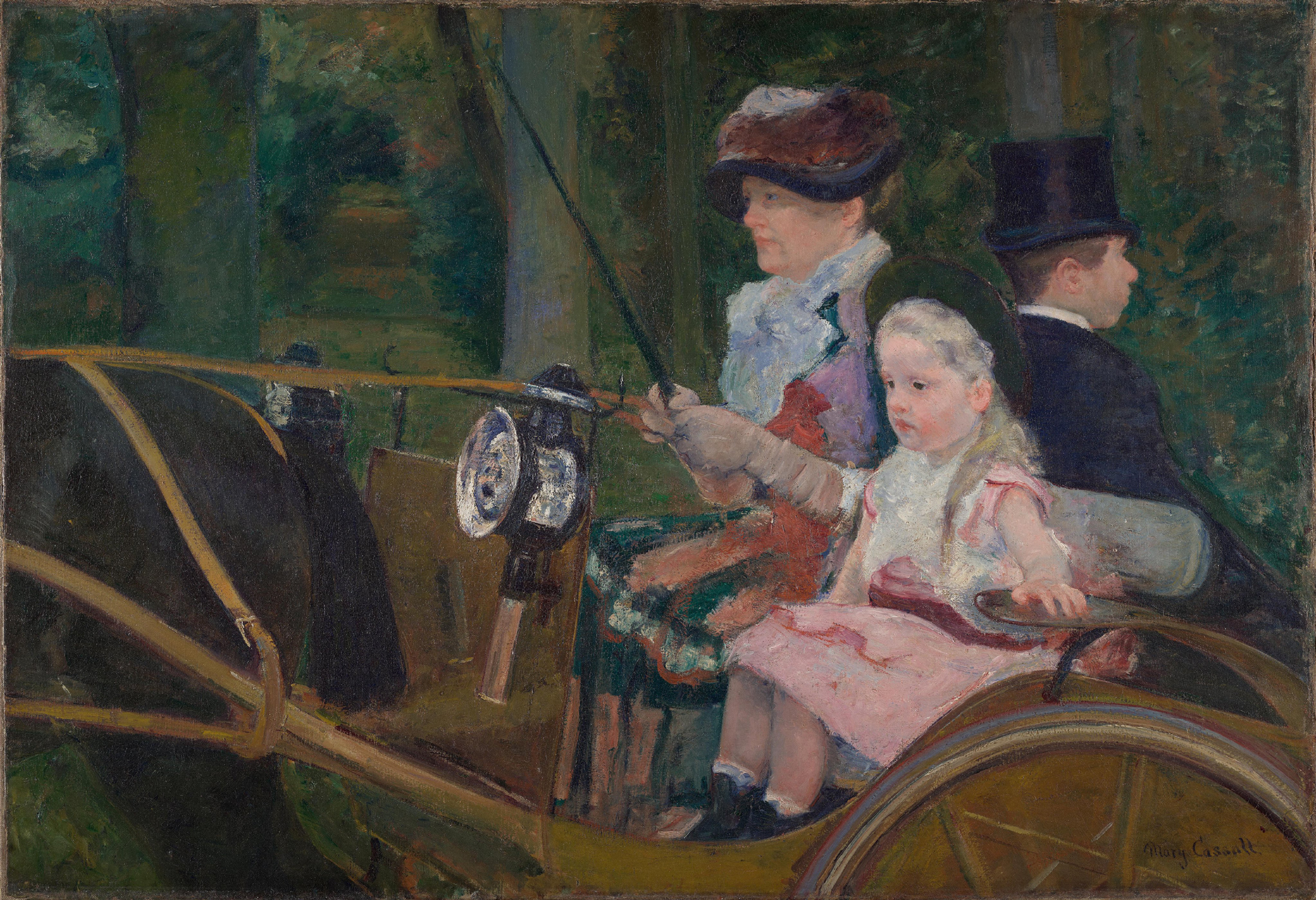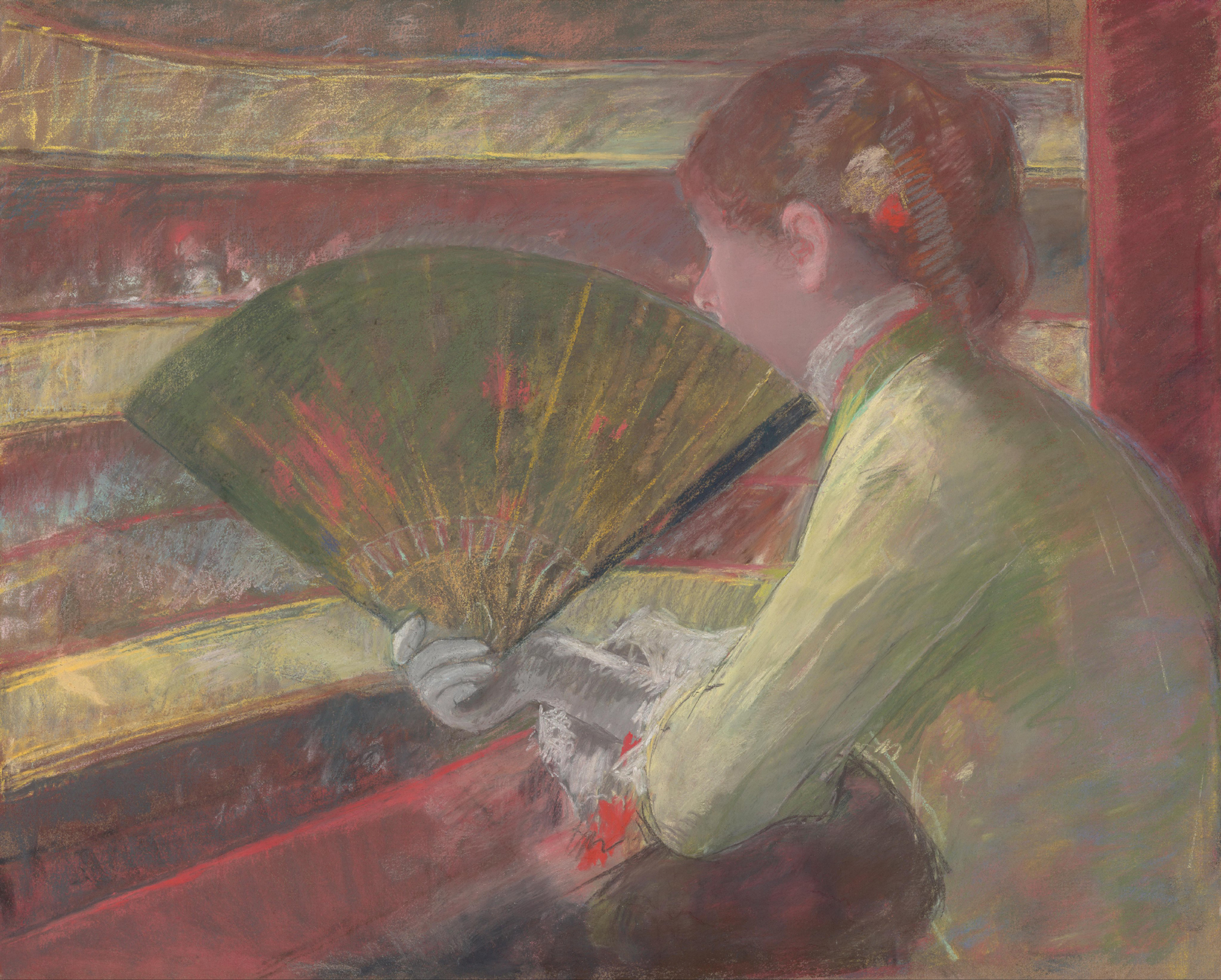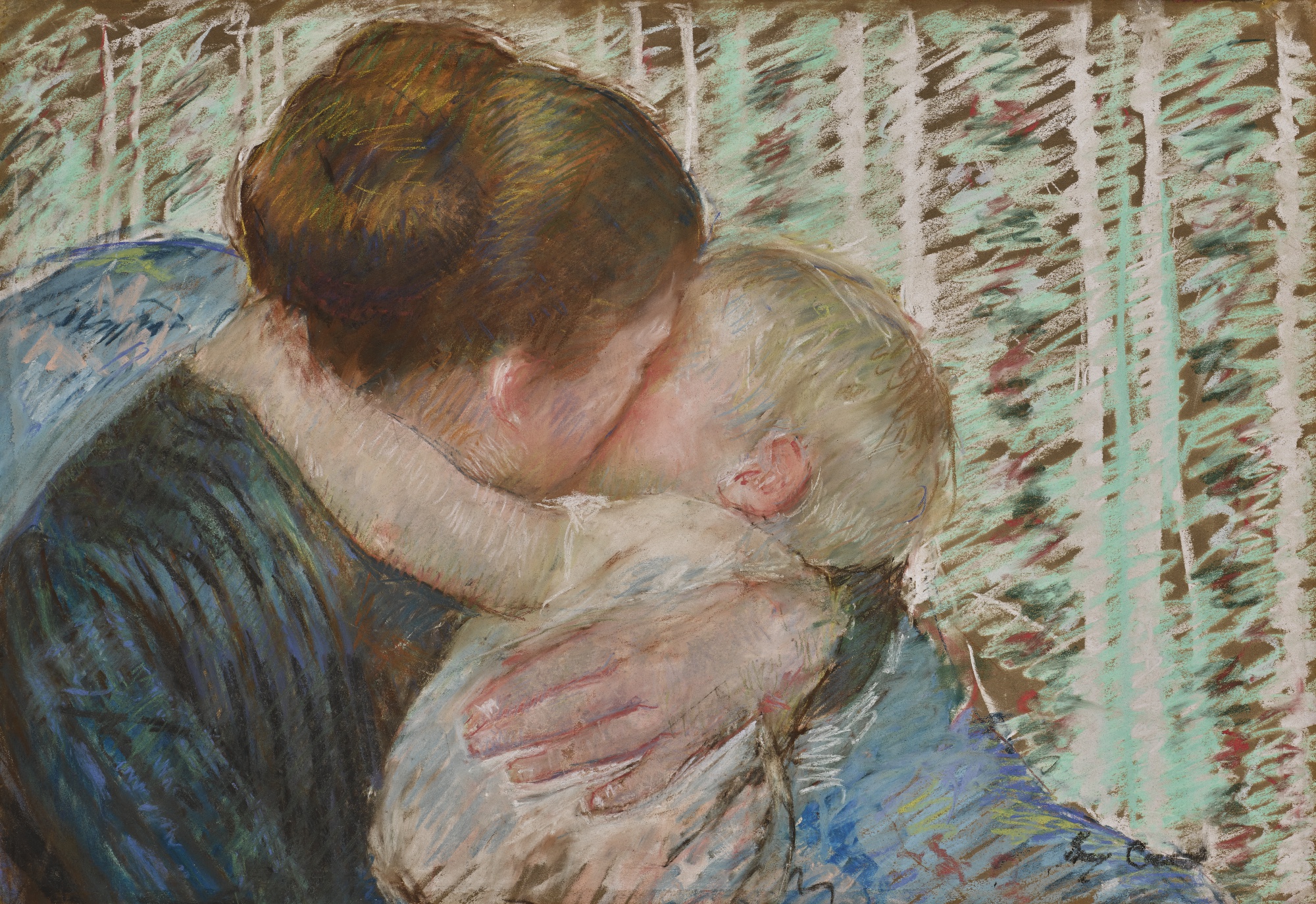A world-famous artist in her era, and widely known as both an artistic and a social revolutionary, the American impressionist Mary Cassatt is too often absented from exhibitions in favor of impressionism’s leading men: the familiar Monet, Degas, Renoir and Cézanne. There are likely many reasons for this, sexism being one, and impressionism’s reputation as a movement of French painters being another. A third could be Cassatt’s subject matter — images of domesticity, children and motherhood — which even today are seen as female interests rather than subjects of artistic glory.
Curious then, as a new exhibition at the Legion of Honor underscores repeatedly, that Cassatt’s subject matter was seen as radical during her lifetime, and was a large part of her immense fame as an artist. Mary Cassatt at Work collects 99 paintings, drawings and prints by the artist and attempts to make a case for Cassatt as an industrious spirit who paid witness to the unseen labor of women. Undoubtedly she did, although I am not sure that this framing best does justice to the works collected in this show. Rather than addressing the economic value of so-called women’s work, Mary Cassatt at Work more compellingly engages the concentrated emotions behind that labor.

As the exhibition notes, Cassatt owed her career to the impressionists. The group offered her mentorship at a time when female artists were rarely supported — even Cassatt’s father, the prosperous banker Robert Simpson Cassatt, insisted that her artistic ventures be self-financed. Impressionism was a good place for a determined woman like Cassatt; its members strove to be egalitarian, involving women to a large degree and granting them a level of prominence absent in other artistic movements of the time.
Cassatt felt truly “independent” within impressionism, even if she had to carefully navigate social mores in order to expand notions of how women and girls could be portrayed in art. Part of her novel approach was to depict women actively shaping their own lives, rather than as static receptacles for the male gaze, like the nude figures in Manet’s The Luncheon on the Grass and Olympia. At the Legion of Honor, the opening galley prominently displays Cassatt’s sizable work In the Loge (1878), a clarion call to audiences that this is a show addressing the female gaze.
The painting fills its frame with an imposing female operagoer hungrily eying the stage through binoculars — her magnificence and authority dwarf a male audience member in the background who strains to ogle, coming off as comically puny. The show’s second gallery quickly follows this up with Driving (1881), which depicts a woman astutely taking the reins of a Parisian carriage, the coachman relegated to an afterthought in the back seat.

It is hard to imagine how unusual such work would have been in the late 19th century, so consider that these paintings were made 40 years before American women like Cassatt were permitted to vote, and at a time when women were widely disallowed from owning property by law. These images were also far more forward-thinking in their depiction of feminine authority than even the art of the other leading female impressionist, Berthe Morisot. As commentators have noted, Cassatt did not lack for courage, and even at times exhibited a recklessness with regards to her career and the subjects she pursued as an artist.
There were considerable consequences for Cassatt’s artistic choices. Her 1878 masterpiece Little Girl in a Blue Armchair was rejected from the 1878 Exposition Universelle in Paris — an enormous celebration visited by some 13 million people — for the crime of depicting a young girl at ease in an armchair. (Cassatt would later write that she was “furious” at the rejection.)
Tastemakers at the time were particularly affronted by the fact that the girl’s petticoats were visible and in disarray — lord have mercy. The work is now seen as a milestone for its sumptuous blues and daring composition, and for granting its young subject a previously unseen level of autonomy.

Less discussed but perhaps equally daring is Françoise in a Round-Backed Chair, Reading (c. 1909), found guarding the entrance to the exhibition’s final room. It shows a girl looking restless, eyes peering not into the book or toward the viewer but rather off and away, an expression of torpor on her face. A small but crucial difference distances this portrait from so many images of girls: she has agency. Françoise seems poised on the brink of adolescence, already tiring of the limitations inherent to the life offered to her. She looks as though she is in search of something more compelling to engage her attention.
Little Girl in a Blue Armchair sits prominently in a gallery devoted to children and childcare, subjects Cassatt knew intimately, in spite of never having any children of her own. This is possibly Cassatt’s most important theme — The New Yorker art critic Adam Gopnik has called her “the first to grasp the modern condition of mother and child,” going on to declare that “she discovered, or recorded, a new emotion in the world, the nearly adulterous, exhausting love with which middle-class women have come to address their babies.”
This emotion is visible in works like The Bath (1890–1891) and A Goodnight Hug (1880), the latter of which jolts the viewer like a bolt of lightning, evoking an astonishingly powerful moment of love between a mother and the child she embraces. Zigzagging streaks of mint and burgundy pastel form columns in the background, drawing the eye to the hug and describing the charged atmosphere of that physical connection. It’s easily one of the most striking images in the show, both for its use of abstraction and for the intense emotions it brings to life in the bodies of those who view it.

The show’s final gallery further refines the theme of childcare to focus on the “modern Madonna,” a series of images of mothers and children that hark back to medieval images of the Madonna and baby Christ. Cassatt drew on Botticelli’s Madonnas for her artistic inspiration, and following the Italian master, the works in this gallery show motherhood to an exacting, anatomical level of precision.
Looking at works like Baby John Nursing (c. 1908), Mother and Child (1905), or Maternal Caress (1896), one garners a sense of the powerful attention that mothers lavish on their young children. They are moments of intense privacy and intimacy in which the women in them seem to forget that they are the objectified sex, instead assuming a subjectivity of their own.
It’s the agency and independence of Cassatt’s subjects, be they young or old, that resonates for a modern viewer of Mary Cassatt at Work. Most compelling to me was not so much the labor being performed but how Cassatt evokes the emotional and perceptual intensity with which it was done. It’s this celebration of a female subjectivity in a world dominated by men that makes these works so lasting and resonant, and that speaks to the real value of labor that is still so often unaccounted for and trivialized. In Mary Cassatt at Work these intangibles are made real enough to feel, visible enough to examine.
‘Mary Cassatt at Work’ is on view at the Legion of Honor (100 34th Ave., San Francisco) through Jan. 26, 2025.